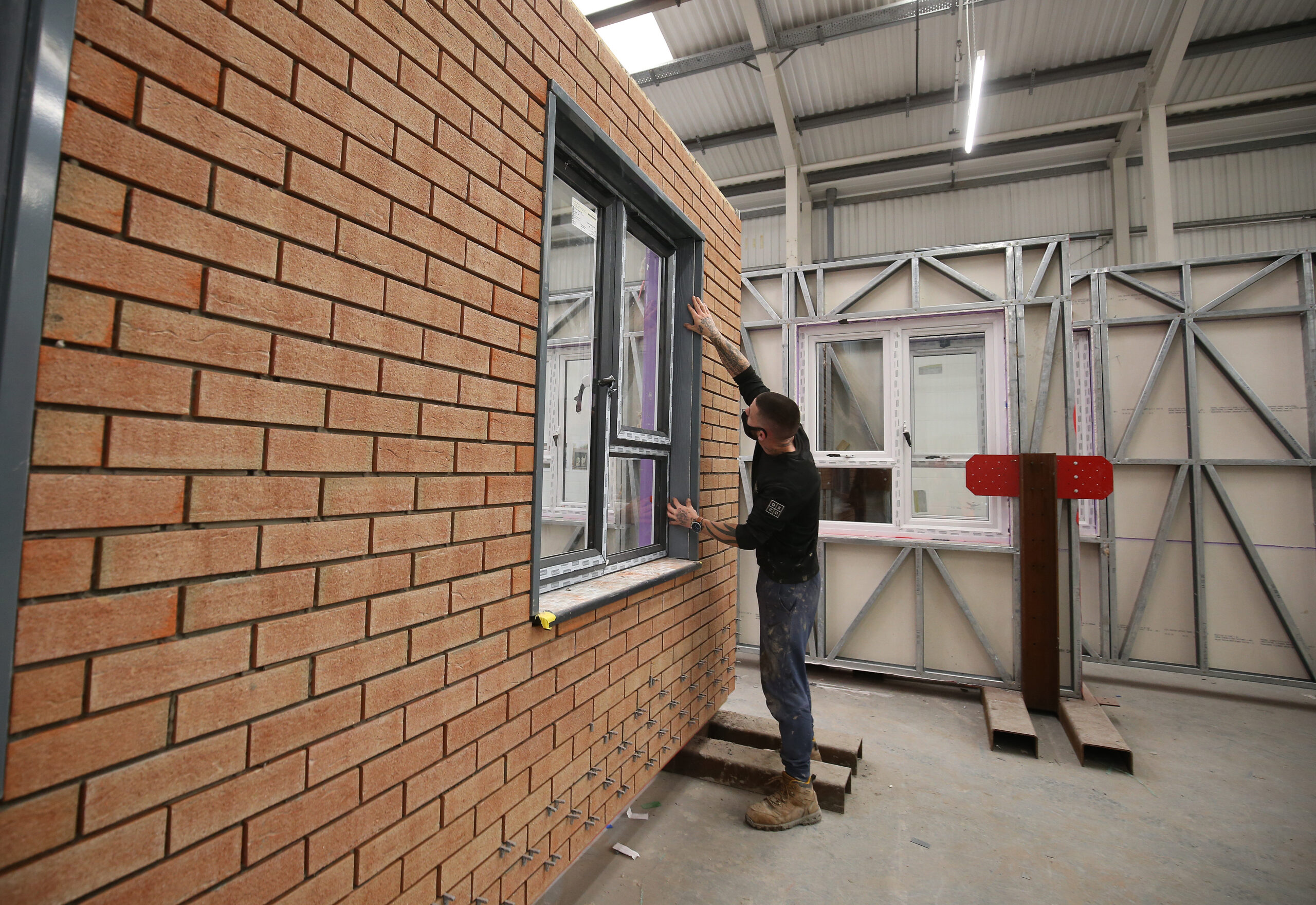
- Jul 20, 2023
- Sutcliffe
- Modular Housing
- 0 Comments
Modular construction is the process in which a building is constructed off-site, under controlled factory conditions, using materials and designs to the same codes and standards as conventionally built facilities. This should be a more environmentally friendly and a more sustainable form of construction.
Typically, the benefits of employing modular construction techniques to build new homes and places to work is often seen as the saviour of the construction industry.
When the system of modular construction is successful, it allows for faster construction of energy-efficient dwellings, generally to higher levels of quality thanks to production of repeatable designs in factory conditions
However, in reality, for several manufacturers, modular buildings have not been straightforward and modular builders have felt the pressures. This bears the question as to why modular construction is a struggling industry at the moment when the product appears to have an abundance of advantages over traditional housing methods.
Sutcliffe has been involved in developing modular construction on a number of projects over the years, and Managing Director, Sean Keyes shares his insights regarding the sector.
The Challenges of Modular Construction
Controlling Costs
Designing and setting up manufacturing facilities involves significant upfront capital expenditure. There are also substantial working capital requirements that modular companies face, receiving payment only once a project is complete and in between contracts the factory and all employees still need to be paid.
Sutcliffe is involved in the design of around 20,000 homes a year across the UK, constructed and procured in various ways, including modular construction as one modern method of construction. Sean Keyes, Managing Director of Sutcliffe, believes that the problem with modular construction is that “profit margins for many contractors are in the range of 1%-2% and this is not enough”.
“If you look at other sectors like social media and software development, profit margins can be 20%, 50% or even 100%. All of the research and development needed is being paid for by a healthy profit. But in the modular construction sector, sadly that isn’t the case,” says Sean.
Not only are there problems with the profits, delays in production can push costs in both the factory and construction sites where modular units plan to be delivered. Sean Keyes states that “the cost of a construction site standing still is a significant cost. If the product is delayed in the factory then you are also paying for the site’s operational costs, interest on loans, security, fencing, site agents, teams of people on site.”
Volatile Order Pipelines
Without a consistent level of work in the pipeline, it is challenging to keep a consistent cash flow, and this is why the construction business model is different to that of other sectors such as car manufacturing. “You are bound to have gaps and delays in between different building contracts” says Sean Keyes.
Within the context of a cost of living crisis, these issues can be even trickier when faced with the problem of inflation, as manufacturers don’t necessarily have the certainty to order materials like steel or timber when prices are fluctuating, due to a lack of regular work.
Added Complexity
Sean Keyes believes that in order to be successful, factory-built homes need to be almost identical and consistent in their design, in order to make their production and installation faster and more efficient.
“I think people anticipate that they can bring everything to site as a completed product and just bolt it together and connect it to the services and away you go. The difficulty is that most things are not exactly the same. We are building one-bedroom apartments, two bedroom-apartments, three-bedroom semis, terraced houses and we are looking to chop and change them. As soon as you start changing things you have another major variable to take into account,” he says.
How can modular construction be improved?
It is evident that modular construction still seems to be a strong and interesting sector, with some positive developments.
Sean Keyes highlights success stories in the UK, such as Starship Group on The Wirral, who rather than building full modules, produce light gauge steel systems and 2D panelised systems, finished with windows and doors.
There are a number of ways in helping the modular building industry gain a surer footing for the future.
Guaranteeing demand
Sean Keyes recommends that clients in the public sector specify a certain proportion of modular homes, to build a pipeline and create a smoother flow of demand, along with committing to building specific proportions of homes using modular construction.
Political stability
The guarantee of political stability can build a confident environment for investors both in offsite manufacturers and developers proposing to use modular construction methods on their projects.
Improved financing options for developers
It is important that developers are able to access finance developments when using modular methods.
Traditional banks have been slow in this regard, however major lenders are offering frameworks for the financing of modular construction schemes which are starting to emerge.
Avoid imitating traditional construction
Within the context of modular construction, it is recommended that when following the appearance of traditional construction great care should be taken so that the homes look traditional but are fully modular to avoid more work on site which makes offsite manufacturing less valuable.
